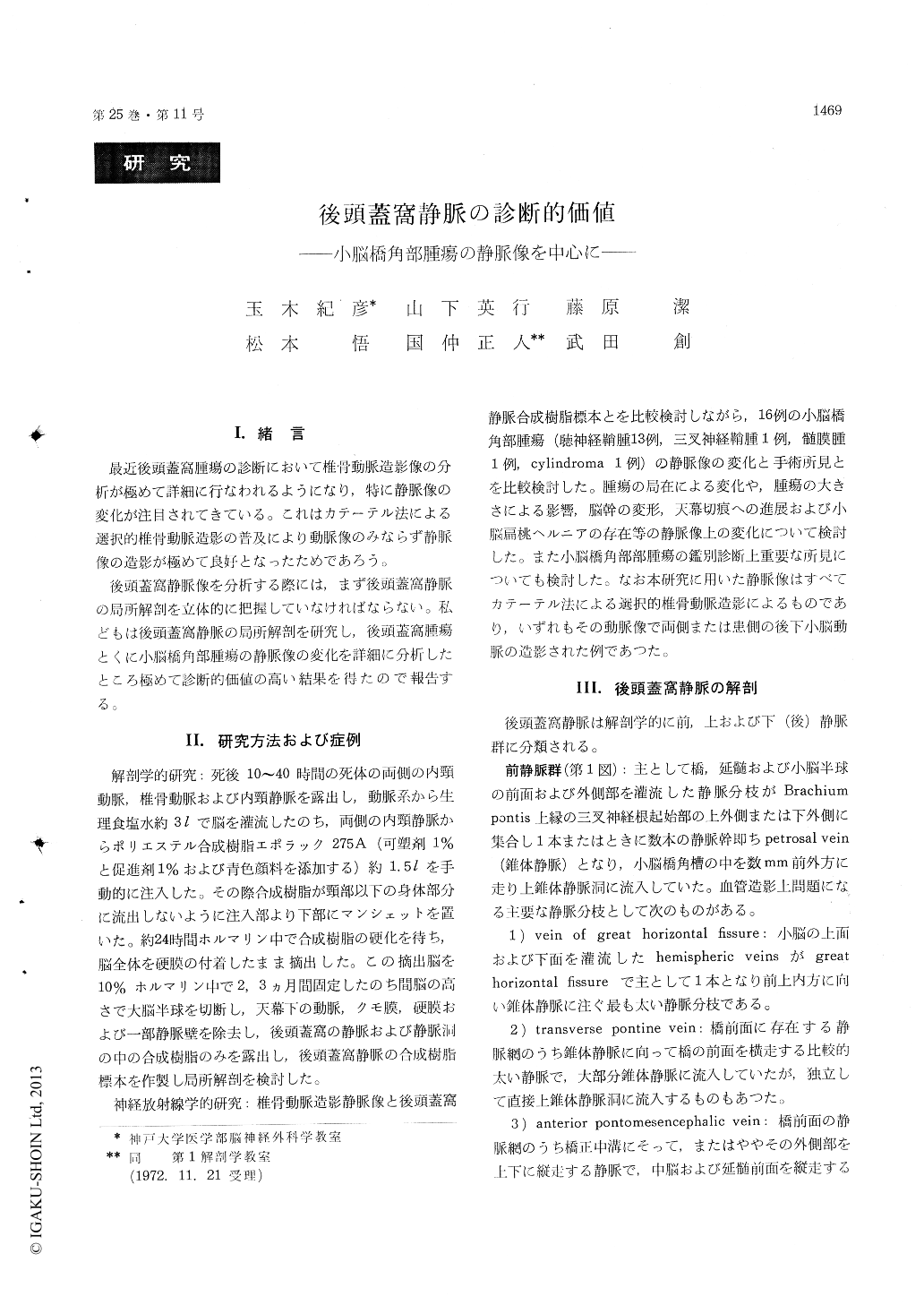Japanese
English
- 有料閲覧
- Abstract 文献概要
- 1ページ目 Look Inside
I.緒言
最近後頭蓋窩腫瘍の診断において椎骨動脈造影像の分析が極めて詳細に行なわれるようになり,特に静脈像の変化が注目されてきている。これはカテーテル法による選択的椎骨動脈造影の普及により動脈像のみならず静脈像の造影が極めて良好となったためであろう。
後頭蓋窩静脈像を分析する際には,まず後頭蓋窩静脈の局所解剖を立体的に把握していなければならない。私どもは後頭蓋窩静脈の局所解剖を研究し,後頭蓋窩腫瘍とくに小脳橋角部腫瘍の静脈像の変化を詳細に分析したところ極めて診断的価値の高い結果を得たので報告する。
We have studied the topographical anatomy of the veins of the posterior fossa by making the plastic injection models of the veins of the pos-terior fossa. The veins of the posterior fossa were divided into three groups : anteor, superior, and in-ferior groups of the veins, and their anatomy were described in detail.
The phlebographic signs of the cerebellopontine angle tumors were discussed and described by analyzing the phlebograms of the 16 cases of the cerebellopontine angle tumors.
Acoustic neurinomas, trigeminal neurinoma meningioma and cylindroma in the region of the cerebellopontine angle showed characteristic findings in the phlebograms of the posterior fossa, and therefore differential diagnosis among them may be made preoperatively from the phlebographic findings. The deformities of the brain stem, the exsistence and the extent of the tumor extension to the tentorial incisura, and of the tonsillar herniation could further be identified in the phlebograms.
The veins of the posterior fossa are of great importance in the early diagnosis of these patho-logic findings described above.

Copyright © 1973, Igaku-Shoin Ltd. All rights reserved.


